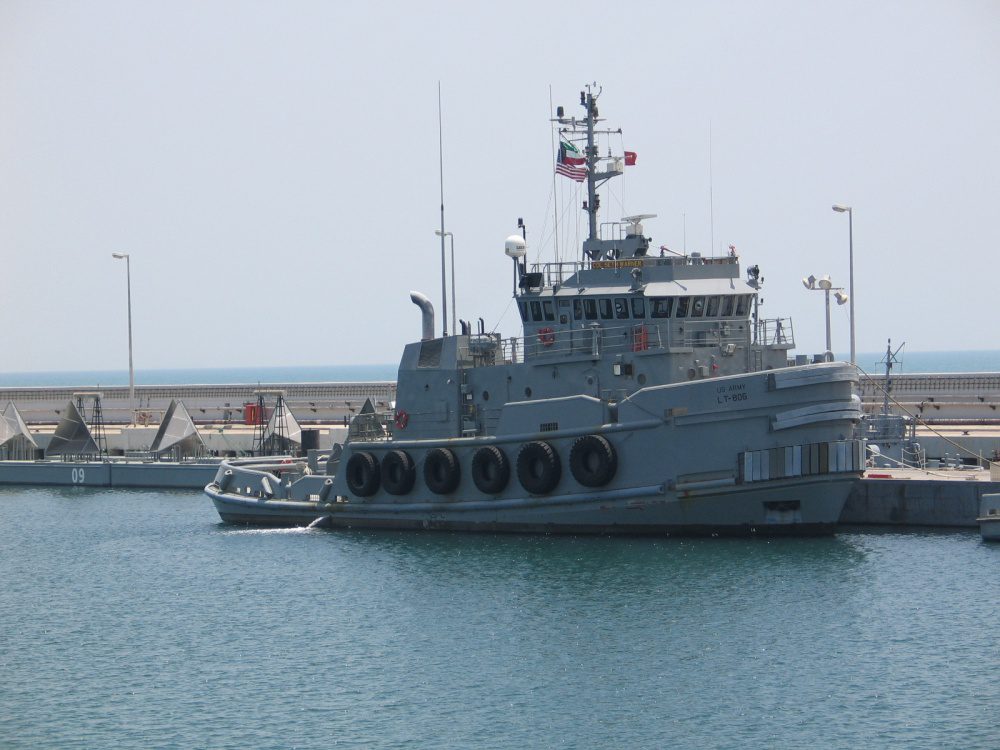File Photo by Michael Carr
By Michael Carr – SGT Homer (not his real name), fell overboard and drowned at sea. His death was preventable, it occurred due to a series of human actions and inactions, a mis-management of priorities, and a corporate culture which undervalued people.
SGT Homer fell off an 128-foot ocean going tug in the vicinity of Cape Hatteras, North Carolina. Seas were rough and confused, as they often are in this area where Gulf Stream waters come with a few miles of land, and temperature differences are often extreme.
Homer was a new mariner, still working on acquiring his sea legs, and on this particular night he became sea sick. He ventured on deck to relieve himself, but none of his shipmates accompanied him, nor did anyone on watch monitor or check on him.
Homer leaned against a chain gate in the lifeline, most likely placing all his weight on the chain has he vomited over the side. At some point the connecting link holding the chain to a stanchion broke and Homer fell overboard. He was gone. A blowing wind, rough seas, and darkness hid his falling.
Hours passed before Homer was missed. “Has anyone seen SGT Homer?” was likely the first indication of a serious problem. I imagine once the broken lifeline was discovered the Large Tug turned around to commence a search. Coast Guard units were alerted and assisted in the search but Homer’s body was not found. It was difficult to plan and execute a search, as no one knew when he fell overboard.
The Tug’s operators conducted an investigation, but it was not a proper investigation. It read something like this: “Homer drowned because he fell overboard”. Sort of like saying: “The helicopter exploded because it hit the ground.”
A Safety Message was drafted which identified issues with improper shackles & directed replacements, but that action was slow to be implemented. Additionally, the organization decided to issue wearable man overboard alarms. A good idea by itself, but not a substitute for correcting the human errors, which formed the root cause of this accident, i.e. allowing crew to go on deck alone at night, lack of accountability, and improper basic vessel maintenance.
Effective accident investigation demands identifying the ROOT causes, not the after effects of an incident. Homer fell overboard because: 1) he was seasick (why?), 2) he went on deck at night by himself (why?), 3) he leaned against a defective chain (why?), 4) he was not accounted for during his watch (why?), and 5) why was the tug in rough weather? Determining a ROOT cause would have included examining the tug’s route. Was heavy weather anticipated and if so, were any diversions considered? Was the crew briefed on heavy weather?
What were the Standard Operating Procedures (SOP) for rough conditions? What was served for chow during the times of heavy weather? Serving spicy or difficult to digest food during rough weather often leads to crew seasickness.
These are all human factors, which take time, and a well-trained investigator to identify and put together properly, painting an accurate and true picture of the problem. Homer drowned, but no substantive changes were made to training, procedures or processes. However, all mariners were now directed to wear a “man overboard module” alarm. Now when you fall overboard we will have a beacon to locate you, assuming of course the alarm works, the battery is not dead, and the system’s alarm panel on the bridge works. A more relevant effort might be to develop procedures to keep crew onboard, and not fall overboard.
A majority of accidents, over 80% according to Coast Guard statistics, occur due to human error. Human error with both individuals, and group error caused by flawed organizational norms. Accident reports often identify an inanimate object, such as a failed lifeline chain, as the culprit. But a ROOT cause analysis would find it is not the chain (in this case), but crew training, organizational safety standards, inspection schedules, and maintenance processes, which are at fault.
To stop accidents you must identify the ROOT cause, which are very often individual and institutional behavior, and related to human decisions, priorities and actions. Ship collisions, fires, sinking’s, oil spills, groundings, and more all have a common element; human error. We cannot pile on more and more technology and automated systems to prevent accidents, we must look at the human factors; our culture, our priorities, and empower ourselves to be the solution.

 Join The Club
Join The Club











